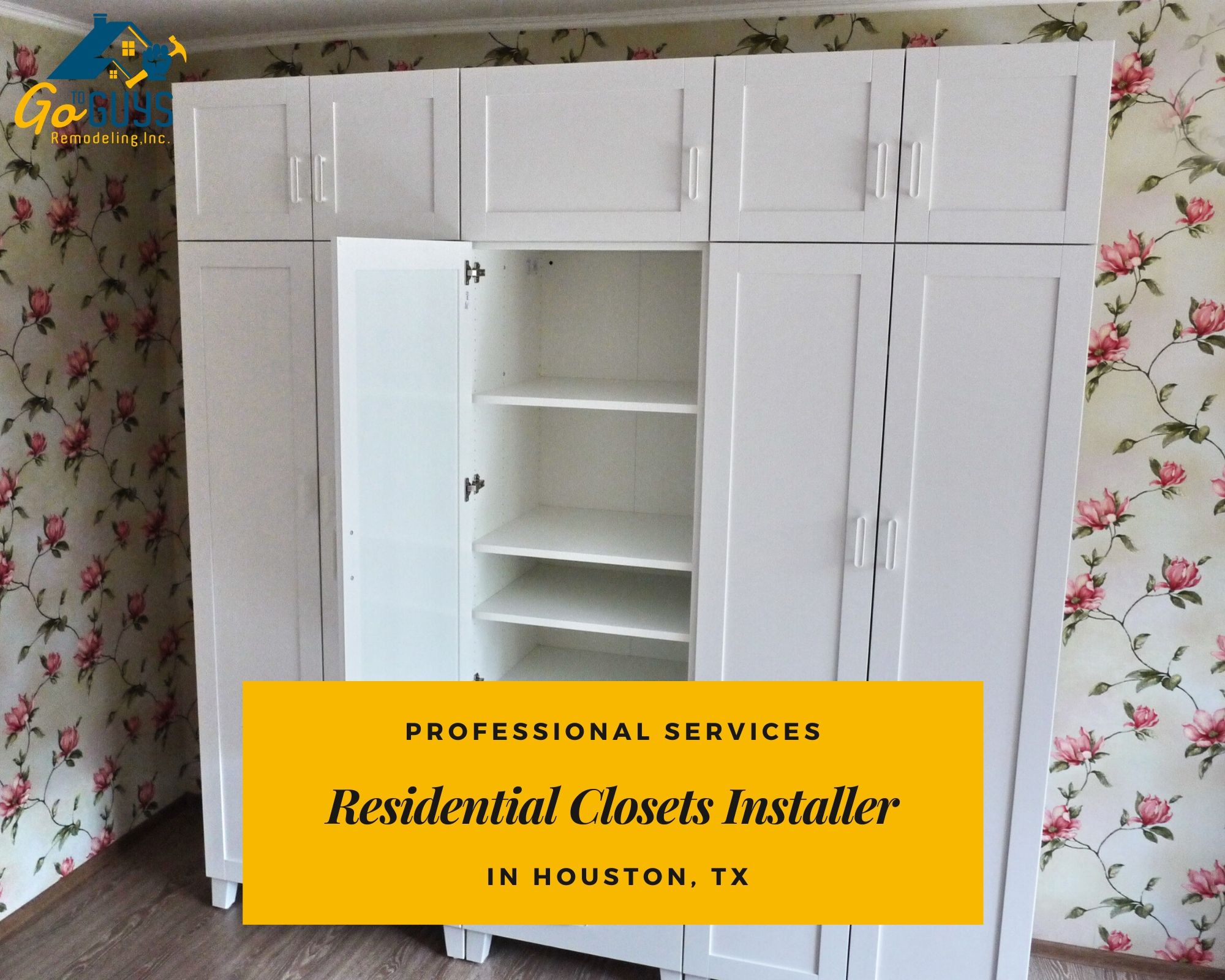
Custom Closets: 5 Design Rules to Follow
Residential Closets Installer in Houston
Custom closet design isn’t for the faint of heart. It takes time to itemize your belongings and create an efficient and organized wardrobe. The best approach is to assess your storage needs before meeting with your designer. Here are seven guidelines to follow if you’re lucky enough to be piecing together a new dream closet.
1. Know the dimensions of your clothes. This is a big one, whether you’re planning to store clothes via hanging racks or shelves. You and your designer want to make sure you’re getting the best possible storage solution for your clothing.
One thing to be aware of is the width of your clothes. The depth of your closet cabinets and panels will range from 14 inches to 24 inches. Most clothing items, including shirts, blouses, jackets and coats, will fit inside a 24-inch-deep area. Anything with less depth won’t always fit your clothing, which means your shirts and blouses will protrude. Plan accordingly, especially if you have an island.
You and your designer will base your new closet around the types of clothing you have. Here are a few clothing dimensions you should know:
- Folded sweaters and shirts require 9 to 15 inches of linear space each.
- Coats can require up to 68 inches of vertical space.
- Pants and jeans require up to 50 inches of vertical space (about half of that when folded).
- Skirts require up to 45 inches of vertical space.
2. Include the right amount of double- and single-hang sections. Evaluate your wardrobe and take inventory of what you own. Do you have more blouses than dresses? Do you own any large winter coats and jackets? Whether to include more double hangs or single hangs will hinge on your clothing collection. Shirts, blouses and slacks belong on double hangs, while dresses and long coats and jackets normally need single hangs.
If you have a lot of dresses and evening gowns, tally them up so you know how much single-hang space you need. If you don’t have many (or any at all), use only double-hang sections. This will help you maximize your storage space.
Men’s closet spaces normally don’t require many, if any, single-hang sections (exceptions are for hunting gear or long coats). Adding more double-hang sections will better accommodate a wardrobe composed of mostly dress shirts and slacks.
3. Figure out the best solution for corners. As tricky as corners are in general, they manage to be even more complicated in closets. There’s usually less space to work with.
The best approach is to utilize as much space as possible; you can never have enough storage for your clothing. Corner shelves allow you to do just that. You can use them to hang clothes or store purses and suitcases. They also create a more seamless closet design.
Suffice it to say, you might not have the space for a corner shelf. If not, it’s perfectly acceptable to have your panel overlap the adjacent wall (as in the closet above). While the resulting corner space may not be super easy to access, you won’t be wasting any storage space. You can hang seasonal attire like winter coats in these hidden spots.
4. If you have room, consider an island. Islands are a dream addition to any walk-in closet. But the spacing has to be right. A 36-inch walkway on each side of the island is ideal, but you can get by with 30-inch or 24-inch walkways if you’re willing to sacrifice a bit of clearance space. This means you need at least 10 feet of linear space (12 feet to have 36-inch walkways). The more clearance space for islands with pullout drawers, the better.
5. Make the shoes fit. If you’re including a shoe rack, saving space is just one part of the challenge. The other? Making sure your shelves and cubbies are big enough to comfortably store your shoe collection.
A pair of women’s shoes generally measures anywhere from 5½ to 10 inches wide, while a men’s pair is 6½ to 10½ inches wide. There should be enough linear space to house the pairs you own (or at least the pairs you wear often). The best rule of thumb is to allow 7 to 12 inches of space per pair.
Fuente: Houzz
Go To Guys Remodeling, Inc. Our company have experience and provide quality services to our clients’ requests and projects. Working with Go To Guys Remodeling is selecting the contractor that goes the extra mile to guarantee resistant results. Contact our team today and ask for your FREE estimate available on any of our categories. Call Us At (832) 819-9981
